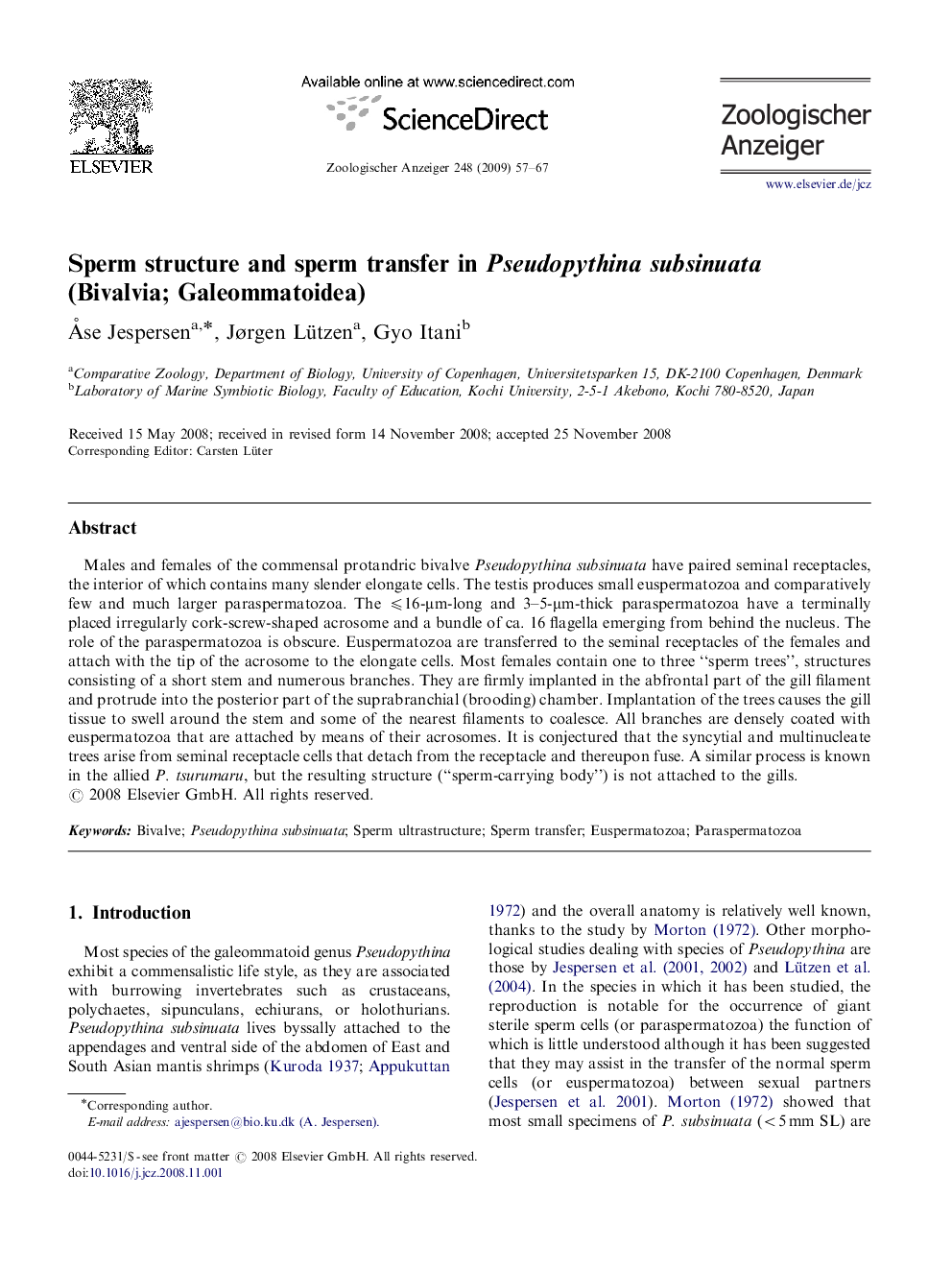| Article ID | Journal | Published Year | Pages | File Type |
|---|---|---|---|---|
| 2790809 | Zoologischer Anzeiger - A Journal of Comparative Zoology | 2009 | 11 Pages |
Males and females of the commensal protandric bivalve Pseudopythina subsinuata have paired seminal receptacles, the interior of which contains many slender elongate cells. The testis produces small euspermatozoa and comparatively few and much larger paraspermatozoa. The ⩽16-μm-long and 3–5-μm-thick paraspermatozoa have a terminally placed irregularly cork-screw-shaped acrosome and a bundle of ca. 16 flagella emerging from behind the nucleus. The role of the paraspermatozoa is obscure. Euspermatozoa are transferred to the seminal receptacles of the females and attach with the tip of the acrosome to the elongate cells. Most females contain one to three “sperm trees”, structures consisting of a short stem and numerous branches. They are firmly implanted in the abfrontal part of the gill filament and protrude into the posterior part of the suprabranchial (brooding) chamber. Implantation of the trees causes the gill tissue to swell around the stem and some of the nearest filaments to coalesce. All branches are densely coated with euspermatozoa that are attached by means of their acrosomes. It is conjectured that the syncytial and multinucleate trees arise from seminal receptacle cells that detach from the receptacle and thereupon fuse. A similar process is known in the allied P. tsurumaru, but the resulting structure (“sperm-carrying body”) is not attached to the gills.
